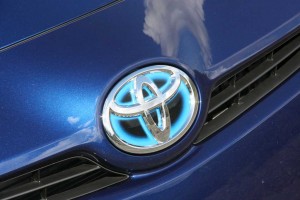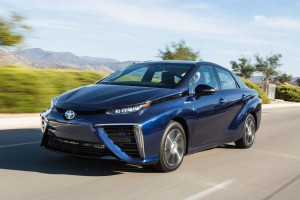
Toyota earned more patents in 2015 than any other automaker. It was the second year in a row the company pulled off the feat.
For the second consecutive year, the United States Patent and Trademark Office has issued more patents to Toyota designers and engineers than to any other automaker, according to a new report by the Intellectual Property Owners Association.
Toyota is the only automaker listed among the top 20 on the IPO list. Other key innovators in the top 20 include Apple, Google, IBM and Microsoft. In 2015, Toyota received 1,636 patents and in the last eight years has been awarded more patents than any other automotive company, the report noted.
“As companies in the automotive industry transform themselves into broader mobility providers, no auto company better demonstrates innovation and technology for the future than Toyota,” said Jeff Makarewicz, senior vice president, Toyota Technical Center (TTC), Toyota’s North American research & development headquarters.
“We’re focused on delivering great experiences for our customers, a cornerstone of Toyota’s product commitment, and this recognition is proof we’re living up to that promise.”
The patents cover inventions such as artificial skin for pedestrian safety mannequins, helping autonomous vehicles detect and safely react to emergency vehicles and fabrics that clean themselves, Toyota officials.
Earlier this month, MIT Technology Review named Toyota one of the world’s smartest companies, placing the automaker among respected tech leaders like Amazon, Alphabet and Facebook, and ahead of Microsoft, IBM and Intel.

The Toyota Mirai fuel-cell vehicle went on sale in Southern California late last year, and was the source of many patents.
At No. 17, Toyota was one of only two automakers to achieve the distinction. Tesla also made the list as did a number of suppliers, among them Mobileye, Nvidia and Bosch, that are closely aligned with carmakers.
(The most “American” car on U.S. roads? Toyota Camry. Click Here for the story.)
Jim Lentz, chief executive officer of Toyota Motor North America, said “Toyota’s scientists are committed to innovation and leading the way to a future of mobility that is cleaner, safer and provides freedom of mobility for all. In the spirit of kaizen, Toyota is committed to improving every day in the service of our customers and society.”
The magazine also recognized Toyota for the launch of the Toyota Research Institute, which “will study the future of mobility, artificial intelligence, and robotics.” It also highlighted Toyota’s release of the Mirai, one of the world’s first mass-market hydrogen fuel vehicles, and Toyota’s efforts to develop “a network of accessible and reliable hydrogen fuel stations” to support the Mirai and other potential future hydrogen vehicles.
A new study also showed General Motors, Ford Motor Co. and Fiat Chrysler Automobiles N.V. invested more in R&D last year than most tech companies, such as Facebook, Hewlett-Packard, AT&T and Motorola.
The report from the American Automotive Policy Council, the Washington-based lobby for the domestic auto industry, reported that, based on the latest data, the auto industry ranks second in global R&D spending and invested more than $20 billion in U.S. R&D last year. In addition, automakers and their suppliers employ nearly one out of every 10 private sector scientists and engineers in America, the AAPC said.
(When will VW start writing checks and answers to other important questions. Click Here to get them.)
“Our members – FCA, Ford and General Motors – rank among the world’s top investors in research and development. We are proud of the critical contributions their engineers and scientists have made to American innovation and economic progress,” said Matt Blunt, AAPC president.
Blunt added, “Investment in R&D is a force multiplier, and this news demonstrates just one more way the automotive industry is having profound impacts on the U.S. economy and creating American jobs.
FCA, Ford and GM are among the leaders in the global race to develop alternative fuel vehicles, advanced materials and autonomous vehicles, Blunt added. During the past five years, these three companies have collectively applied for more than 15,000 U.S. patents, he said.
Blunt also said the scope of the spending on research and development is driven in large part by the technical complexity built into cars to make them safer and more durable. A new car or truck contains about 60 microprocessors, while a new smartphone only contains one, Blunt said. Each vehicle’s microprocessor also manages 100 or more sensors, providing automobiles with state of the art technologies.
(What’s new for 2017? Click Here to check out all the upcoming models.)
Automakers also manage the world’s largest supply chains – a car or truck contains between 8,000 and 12,000 parts sourced from manufacturers across the country and around the world and require complex systems to insure delivery.

“Each microprocessor manages 100 or more sensors.” I don’t think so.